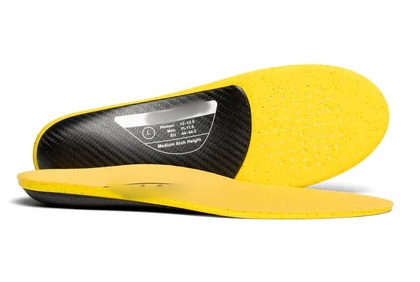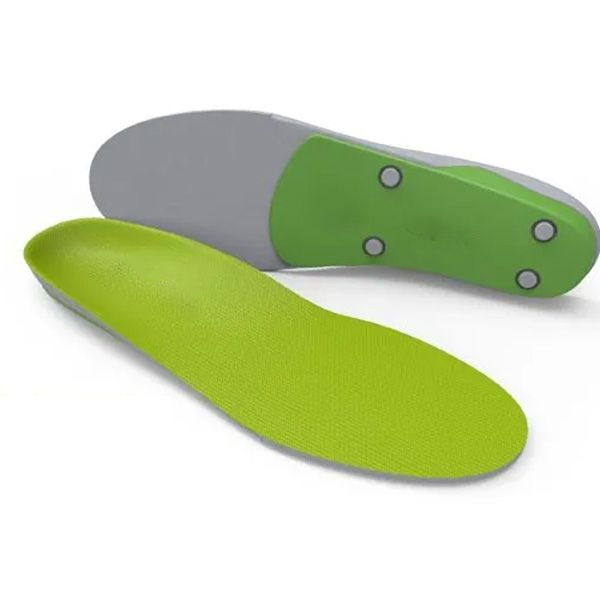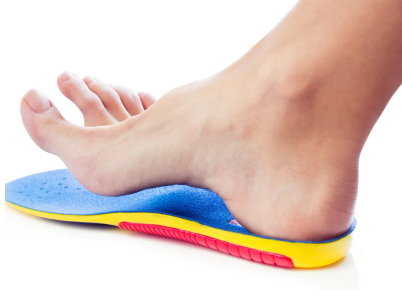Views: 222 Author: Edvo Publish Time: 2025-10-24 Origin: Site











Content Menu
● Understanding Leather Insoles
>> Advantages of Leather Insoles
● Durability Comparison: Leather vs Foam
● Performance in Daily and Professional Use
>> In Office and Business Footwear
>> In Sports and Active Footwear
>> In Hot and Humid Conditions
● Hybrid Insole Design: Combining Strength and Comfort
● OEM Manufacturing and Customization Capabilities
● Maintenance Tips for Longer Durability
● Choosing the Right Type of Insole
● Environmental and Sustainability Considerations
● Innovations in Insole Technology
● FAQs
>> 1. Are leather insoles better for sweaty feet?
>> 2. How long do foam insoles generally last?
>> 3. Can leather insoles be washed with water?
>> 4. Which type provides better posture support?
>> 5. Can leather and foam be used together?
Leather and foam insoles are two of the most common options used in footwear manufacturing, each offering distinct benefits in comfort, performance, and durability. For consumers choosing between them or brands sourcing from OEM suppliers, understanding the detailed comparison between these two materials is crucial. Durability often defines customer satisfaction, product replacement cycles, and brand reputation — making material choice a key factor in competitive shoe manufacturing.

Leather insoles are prized for their natural strength, breathable texture, and long lifespan. Typically produced from cowhide or sheepskin, leather undergoes a tanning process that enhances its resilience against cracking, moisture, and odor. Due to its natural properties, leather molds to the foot's shape, providing a comfortable and supportive contour over time.
- Excellent structural integrity that resists flattening.
- Breathable nature allows air flow and moisture absorption.
- Naturally odor-resistant and comfortable for extended wear.
- Premium appearance suitable for high-end footwear.
- Environmentally friendly when vegetable-tanned.
Leather insoles are widely used in dress shoes, formal footwear, and luxury brand collections. They are perfect for hot climates and long-duration wear where breathability is essential. High-end business shoes, handmade brands, and orthopedic designs often rely on leather insoles for consistent shape retention and natural comfort.
Producing leather insoles involves leather selection, tanning, cutting, laminating, polishing, and shaping. Skilled craftsmanship ensures the leather remains soft yet firm, maintaining durability while achieving precise fitting. Our OEM factory uses advanced cutting technology and environmentally friendly tannins to deliver quality shoes suitable for global buyers.
Foam insoles are designed using synthetic materials such as EVA (Ethylene Vinyl Acetate), PU (Polyurethane), and memory foam. These materials prioritize cushioning, energy absorption, and flexibility, making them extremely popular in athletic and casual footwear markets. Modern foam technology allows manufacturers to create lightweight and ergonomic shoe interiors at scale.
- Soft cushioning reduces foot fatigue and impact stress.
- Lightweight and adaptable to different shoe designs.
- Adjustable density levels for various foot needs.
- Affordable and ideal for high-volume OEM production.
- Customizable color, texture, and surface finish.
Foam insoles dominate sports shoes, sneakers, therapeutic footwear, and shoes for children or elderly individuals. Their softness helps absorb shocks during running, walking, or standing for long hours. For brands prioritizing comfort and cost-efficiency, foam remains a practical choice.
In foam insole manufacturing, polymer materials are blended, molded, and cured to achieve desired elasticity. Depending on the density and composition, foam insoles can vary in softness and support. They may include an added textile cover or logo printing for OEM branding.
| Feature | Leather Insoles | Foam Insoles |
|---|---|---|
| Lifespan | 1–3 years depending on care | 6–12 months under regular wear |
| Compression Resistance | Maintains structure after long use | Compresses with time and weight |
| Breathability | Excellent | Moderate |
| Water Resistance | Moderate, can be treated | Lower, absorbs sweat easily |
| Maintenance | Requires light care | Easy to replace |
| Comfort Level | Firm but supportive | Soft and cushiony |
| Eco Impact | Natural and biodegradable | Synthetic and less eco-friendly |
Leather insoles are thicker and stronger, whereas foam insoles tend to break down after repeated pressure. While foam's resilience varies by material density, no foam type fully matches leather's natural durability. Still, foam excels in shock absorption and pressure relief, offering an advantage in comfort-focused footwear.
Leather insoles provide a stable foundation that ensures good posture and a sleek appearance. Their long life and breathability make them ideal for customers wearing formal shoes throughout the day.
Foam insoles outperform leather in scenarios demanding high-impact absorption. EVA or gel-infused foam reduces strain during running and sports training, giving athletes improved comfort and injury prevention.
Leather's moisture-wicking ability helps in warm weather, keeping feet dry and odor-free. Foam, on the other hand, may trap heat if not properly ventilated. Manufacturers often add ventilation holes in foam designs to improve airflow.
Foam insoles insulate better due to their air-filled cells, helping feet retain warmth. This makes them ideal for winter shoes and outdoor boots.

Many manufacturers now combine both materials to maximize their advantages. A leather-top hybrid insole features a leather upper layer for breathability and a supportive foam base for cushioning. The layered structure enhances durability and comfort, especially for shoes requiring long-lasting wear and comfort balance.
These hybrid designs are widely used in premium business casual shoes, orthopedic footwear, and custom brand collaborations. Our OEM factory produces hybrid insoles with adjustable hardness levels, meeting international quality standards and delivering both longevity and flexibility preferred by top brands.
As one of China's leading insole manufacturers, we specialize in developing both leather and foam products tailored to client specifications. Our design and production facilities can modify thickness, hardness, texture, and logo design to meet market preferences.
Our OEM service includes:
- Custom mold and size design to meet various shoe types.
- Development of eco-friendly leather and biodegradable foam options.
- In-house printing and brand engraving for private labels.
- Automated precision cutting machinery for efficient mass production.
- Stringent quality inspection to ensure each pair meets export standards.
Whether your business needs premium leather insoles for high-end shoes or soft foam insoles for mass-market footwear, our production lines can meet diverse global demands. We prioritize quality sustainability, making us a trusted OEM partner in footwear materials manufacturing.
- Wipe gently with a damp cloth after use to remove sweat and dust.
- Keep in a cool, ventilated space to prevent moisture buildup.
- Apply leather conditioner monthly to retain flexibility.
- Avoid direct exposure to sunlight or soaking in water.
- Remove insoles regularly to air-dry after use.
- Use mild detergent for hand washing if necessary.
- Rotate between pairs of insoles to extend their life.
- Replace approximately every six months for optimal support.
Proper care can significantly extend the lifespan of both materials and maintain product freshness, comfort, and hygiene.
When selecting between leather and foam insoles, customers and brands should evaluate key priorities such as usage scenario, style, and target audience.
- Choose leather insoles for long-term durability, natural feel, and luxury aesthetics.
- Choose foam insoles for lightweight comfort, shock absorption, and cost efficiency.
- Choose hybrid insoles for high-value custom footwear needing both properties.
OEM buyers often balance material choice based on regional climate, shoe design, and market positioning. For example, European brands prefer vegetable-tanned leather for formal shoes, while North American brands prefer EVA foam for sports and work shoes.
Growing awareness of sustainability in footwear manufacturing has influenced material choices. Genuine leather is biodegradable and often sourced from by-products of the meat industry, reducing waste. However, tanning methods must comply with international environmental standards.
Foam insoles, though synthetic, are evolving toward sustainable alternatives like bio-based EVA and recycled PU materials. Many factories now apply greener production lines, focusing on reducing emissions and waste volumes. By offering eco-friendly packaging and recyclable insoles, manufacturers can align with global sustainability trends while maintaining commercial competitiveness.
Footwear technology is continuously advancing. New materials and smart design integrations enhance both performance and longevity. Current developments include:
- Memory foam with dynamic rebound that retains shape under heavy use.
- Perforated leather liners improving airflow and sweat management.
- Antibacterial coating technologies that prevent odor.
- Ergonomic arch designs providing orthopedic support.
Our R&D department constantly experiments with material combinations to achieve better flexibility, shock resistance, and energy return while ensuring production efficiency. This helps OEM partners introduce innovative collections for international markets.
Leather and foam insoles each deliver value in different ways. Leather insoles stand out for their impressive durability, natural breathability, and elegant finish, ideal for long-term and luxury footwear. Foam insoles shine in soft comfort, affordability, and shock absorption, making them perfect for athletic or leisure shoes.
For brands seeking the best of both worlds, hybrid combination insoles offer a strong balance between lasting structure and cushioning flexibility. When sourced from a reliable OEM manufacturer, properly engineered insoles elevate product quality, user comfort, and brand reputation.
Whether your focus is elegance or performance, the right insole material ensures every step taken by your customers combines comfort, durability, and excellence.

Yes. Leather's porous structure naturally absorbs sweat and promotes ventilation, helping to keep feet dry longer than synthetic materials.
Foam insoles typically last six to twelve months depending on foam density, usage intensity, and moisture exposure. High-quality EVA or PU foams may last slightly longer.
No. Leather should not be soaked or machine-washed. Instead, clean using a soft damp cloth and dry naturally. Use leather conditioner to prevent stiffness or cracking.
Leather insoles give stable footing for formal and orthopedic footwear, supporting improved posture. Foam insoles add cushioning but offer less firmness for precise alignment.
Absolutely. Many modern insoles feature a leather surface combined with a foam base. This dual-layer design merges durability with comfort, providing enhanced performance and longer life.